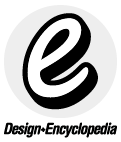 Design For Versatility
Design For Versatility
Design for Versatility is a design approach that emphasizes flexibility, adaptability, and customization to meet the needs of a diverse range of users and contexts. It encourages designers to think beyond traditional design conventions and to explore new possibilities and solutions that can enhance the functionality and value of their designs. At its core, Design for Versatility is about creating designs that can be easily adapted to different contexts, user needs, and preferences, while also being resilient and future-proof. One key aspect of Design for Versatility is the focus on modularity and scalability. By creating designs that are modular and scalable, designers can offer users greater flexibility and customization options. Modular designs can be easily modified and reconfigured to meet changing user needs and preferences, while scalable designs can be expanded or contracted to fit different contexts and usage scenarios. This approach can also help to reduce waste and improve sustainability by allowing users to repurpose or upgrade their designs rather than discarding them. Another important aspect of Design for Versatility is the emphasis on user-centered design. This approach involves understanding user needs and preferences, as well as the context in which the design will be used. By incorporating user feedback and insights into the design process, designers can create products and services that are more intuitive, user-friendly, and effective. This can also help to increase user satisfaction and loyalty, as well as drive innovation and differentiation in the marketplace. Finally, Design for Versatility also involves considering the potential for future changes and updates to the design. By designing with flexibility and adaptability in mind, designers can create products and services that are more resilient and future-proof. This can help to reduce the risk of obsolescence and ensure that the design remains relevant and valuable over time. In summary, Design for Versatility is a design approach that emphasizes flexibility, adaptability, and customization to meet the needs of a diverse range of users and contexts. It involves creating modular, scalable, and user-centered designs that can be easily adapted to changing needs and preferences, while also being resilient and future-proof. By adopting this approach, designers can create products and services that offer greater value, functionality, and user satisfaction, while also driving innovation and differentiation in the marketplace.
Author:
Mark Anderson
Keywords: flexibility, adaptability, customization, modularity, scalability, user-centered design, resilience, future-proof, innovation, differentiation
 Design For Versatility
Design For Versatility
Design for Versatility is a design approach that enables designers to create products and services that are adaptable and customizable to meet the needs of a wide range of users. It encourages designers to think beyond traditional design conventions and explore new possibilities and solutions. The focus of Design for Versatility is on creating designs that are flexible, modular and scalable, allowing users to customize their experience and tailor the design to their needs. By designing for versatility, designers can create products that are more resilient and offer greater value to end users. Additionally, Design for Versatility also offers the benefit of creating designs that reflect user preferences and behaviors, as well as being easily adaptable as user needs and preferences change. This approach encourages designers to be creative and to think outside the box while also considering user needs and preferences, available materials and techniques, and the potential for future changes and updates to the design. Design for Versatility is an effective way to create designs that are highly functional, aesthetically pleasing, and able to meet the needs of a wide range of users.
Author:
Federica Costa
Keywords: Design for Versatility, Design Flexibility, Design Customization, Adaptable Design, User-Centered Design, Modular Design.
 Design For Versatility
Design For Versatility
Design for Versatility is a design approach that enables designers to create products and services that are adaptable and customizable to meet the needs of a wide range of users. This approach encourages designers to think beyond traditional design conventions and explore new possibilities and solutions. Designers are encouraged to consider the user’s context when creating a design, as well as the potential for future changes and updates to the design. A key aspect of this approach is the ability to create designs that are flexible, modular, and scalable. This approach can also be used to create designs that are more resilient and offer greater value to end users. Additionally, Design for Versatility also offers the benefit of creating designs that reflect user preferences and behaviors, as well as being easily adaptable as user needs and preferences change.
Author:
Claudia Rossetti
Keywords: Flexibility, Modularity, Scalability, Adaptability, Resilience, Versatility.
 Design For Versatility
Design For Versatility
Design for Versatility is a design approach that encourages designers to think flexibly and to create designs that are capable of adapting to various contexts and user needs. By designing for versatility, designers can create products that are not only aesthetically pleasing but also highly functional. This approach encourages designers to think beyond traditional design conventions and explore new possibilities and solutions. Design for Versability is a process that involves understanding user needs and preferences, researching available materials and techniques, and creating designs that can be easily adapted to different contexts. It also involves considering the potential for future changes and updates to the design. By designing for versatility, designers can create products that are more resilient and offer greater value to end users.
Author:
Eleonora Barbieri
Keywords: Design Thinking, Flexibility, Adaptability, User Experience, Product Design, Design Resilience.
|

 About the Design+Encyclopedia
About the Design+Encyclopedia